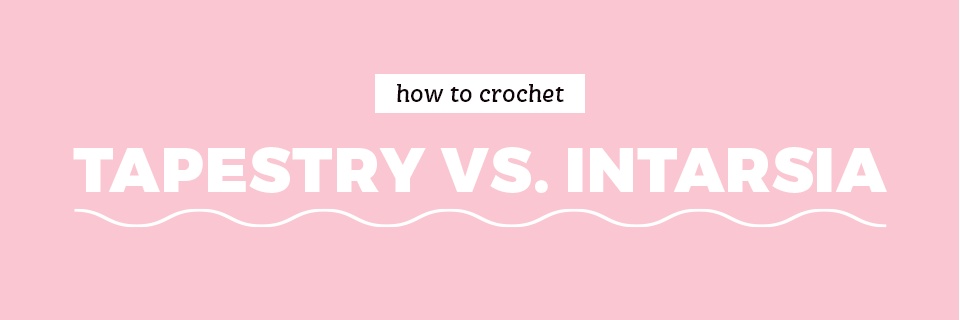
Learn more about crochet colorwork! Crochet colorwork is when you combine two different colors of stitches within the same row or round of a project. There are two main techniques for accomplishing this: tapestry crochet and intarsia. These two methods are worked slightly differently and are used in different types of projects. We tell you how to do it and compare and contrast them below!
Tapestry Crochet

What it is
Tapestry crochet involves working 2 or more colors of yarn within a single row, and frequently switching back and forth between those colors to create a pattern. Typically, the working color is worked over (and covers) the non-working color(s) so it is hidden inside the stitch.
When to use it
Tapestry crochet is typically used when you have an all over colorwork pattern that switches colors every few stitches (like chevron). Because you are switching back and forth between colors frequently, you are always carrying the non-working color along inside the stitches.
Easiest way to do it
Tapestry crochet is much easier when working in rounds or in right-side-only rows (where you join the yarn at the beginning of each row, and cut at the end of each row and then go back to join again). Tapestry crochet can be done in back and forth rows, but typically the stitches don’t look as clean.
How to do it
To have a clean color change in crochet, you need to complete the previous stitch in the new color. This means you read the color chart until it is time to switch colors. In the stitch previous to the new color, complete the final yarn over and draw through with the new color you are switching to. For tapestry crochet, you will always work your stitch over and around the non-working color, carrying it along with you as you work.
Practice
Try out this technique with the chart provided, or practice with the Floral Tapestry Top.

Intarsia
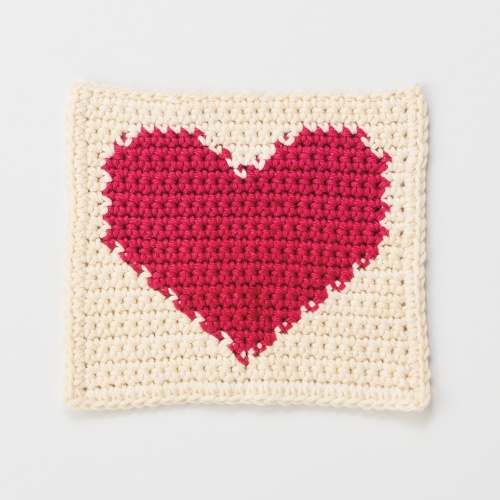
What it is
Intarsia involves working 2 or more colors of yarn within a single row, when those colors appear in big blocks of color. Typically, you work each color section with a different ball of yarn attached to each section.
When to use it
Intarsia is typically used when you have large blocks of color in a pattern that does not require you to change colors often. Because you are not switching colors frequently, you will want to avoid carrying the non-working yarn for long periods of stitches so it is easier to have a separate bobbin of yarn for each color section.
Easiest way to do it
Intarsia is much easier when working back and forth in rows rather than in the round. Working back and forth in rows allows you to work a color section switching between bobbins of color as you make your way across. When you work the return row, the bobbin will be there waiting for you to begin working the rest of the way across the row.
How to do it
To have a clean color change in crochet, you need to complete the previous stitch in the new color. This means you read the color chart until it is time to switch colors. In the stitch previous to the new color, complete the final yarn over and draw through with the new color you are switching to. For Intarsia, you will not carry the non-working yarn. Let the yarn hang from the last stitch. You will probably have a bobbin or ball of yarn attached to each color block section of your project.
Practice
Try out this technique with the chart provided, or practice an intarsia/tapestry combo with the Rose Window Top.
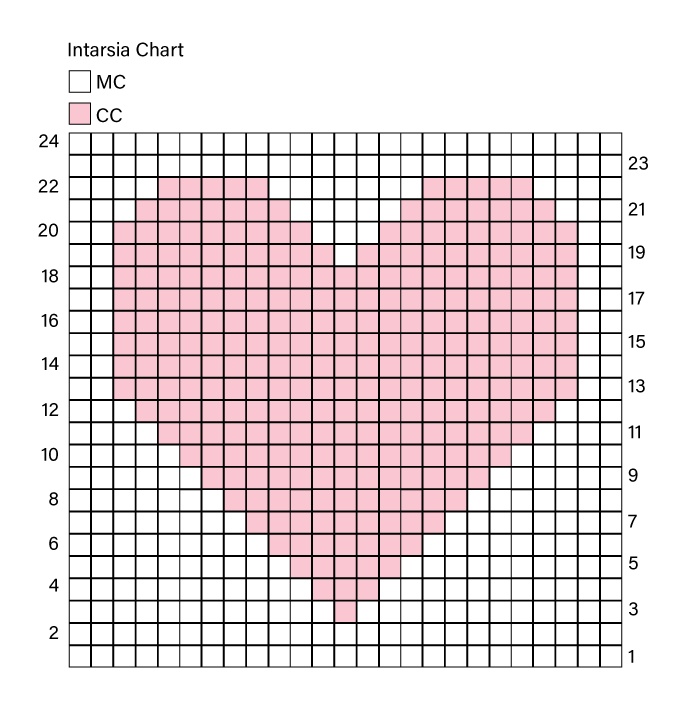
Changing Colors
What's the same: In both techniques, you finish the stitch before the color change with the new color.
What's different: In tapestry crochet, you are always working over the non-working color and carrying it along the inside of the project as you work. In Intarsia, you will not work over the non-working color and each color section will be attached to its own yarn bobbin or ball of yarn.
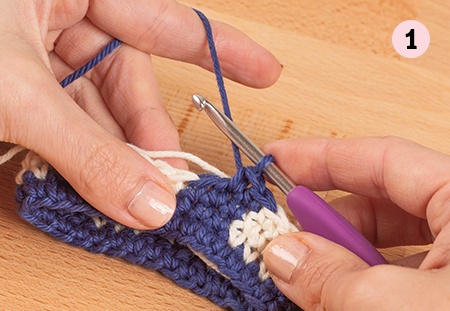
Work single crochet in the first color

In the stitch before a color change, insert hook in stitch
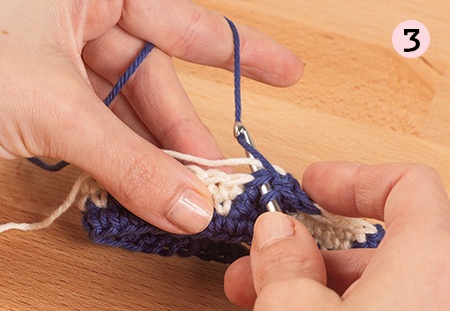
With the old color, yarn over
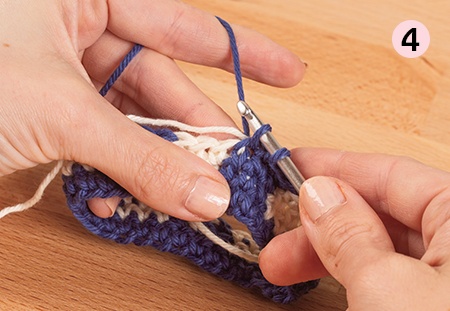
Pull up a loop in the old color (2 loops on hook in old color)
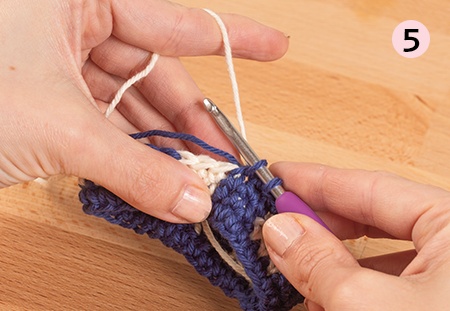
Switch to the new color
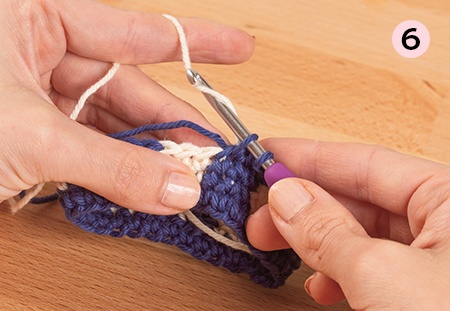
With the new color, yarn over
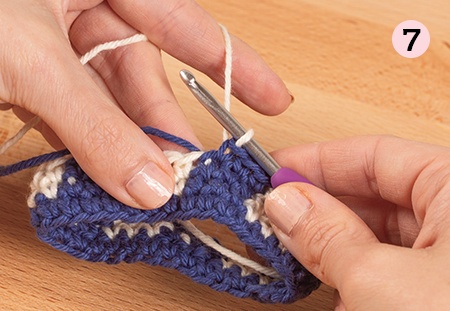
Pull the new color through the 2 loops of the old color (the loop left on the hook will be in the new color)
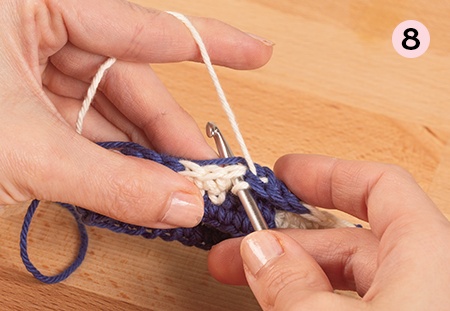
Continue working the next stitch in the new color






